Efforts to Cope with Torrential Rain
Installation of Rainwater Drainage Pumps
Rainwater falling on Kansai International Airport flows through drainage pipes to the sea. Initially, rainwater was drained naturally to the sea by drainage pipes sloping outward from the interior of the island. However, the area near the seawall, being closer to the sea, experienced less subsidence than the inland areas. As a result, the slope of the drainage pipes gradually became gentler, and the drainage function, particularly near the seawall, started to deteriorate. To solve this problem, pumps were installed at the outlet of the drainage pipes to improve the efficiency of rainwater drainage. The installed pumps are capable of handling a heavy rainfall of 55 mm per hour, a level that could occur once in 10 years.
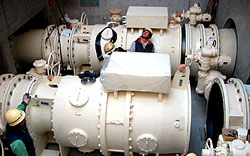
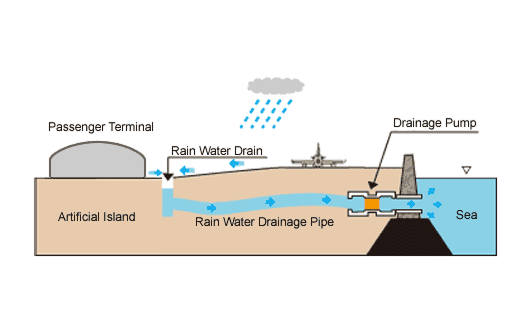
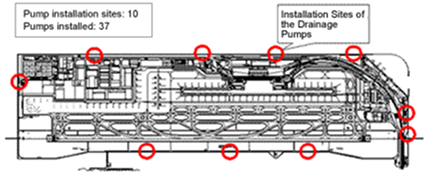
Installation Sites of the Drainage Pumps for rain water
Initiatives for earthquake-resistant
Seismic Reinforcement
There are many viaducts in the airport-island to ensure smooth traffic conditions. Even if a Great Hanshin-like earthquake occurred, we have secured passenger safety and will be able to keep the airport operating. Kansai Airports has improved its viaducts with anti-earthquake reinforcement.
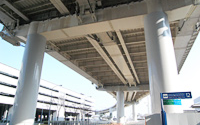
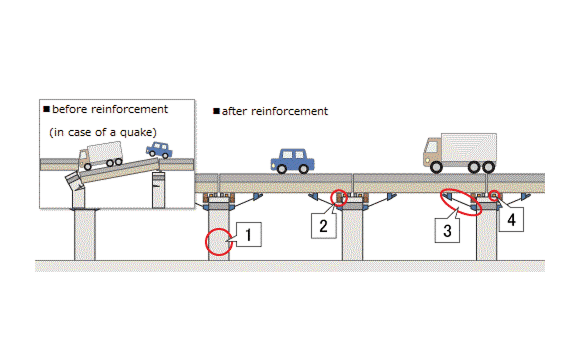
|
For areas where seismic performance cannot be ensured with concrete-filled reinforcement alone, steel plates (ribs) for reinforcement were installed on the outside of the steel piers. |
|---|---|
|
In the case of bridge damage or destruction, we limited displacement through the installation of a displacement-limiting device. |
|
In the case of displacement-limiting device failure, and to prevent the collapse of the girder bridge, we have connected the bridge and the pier through a PC cable. |
|
In the case of the bridge base being fragmented, we installed a fault-prevention device to secure the road as an emergency route right after an earthquake. |
Typhoon Response
Typhoon wave mitigation
Typhoon Jebi (Typhoon No. 21) in 2018 flooded the airport island due to waves over the seawall and caused severe damage, including flooding of the runway, and it took more than two weeks to fully restore airport functions.
Based on this experience, Kansai International Airport reinforced its seawall by adding concrete to raise its height to withstand the highest tide recorded in Osaka Bay (assuming Second Muroto Typhoon). This elevation is designed to endure waves equivalent to those expected once in 50 years. In addition, the seawall is periodically raised in response to ground subsidence to ensure safety.
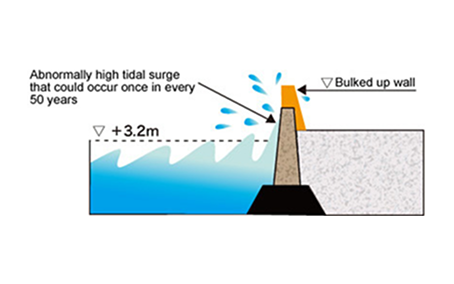
Illustration of raised seawalls
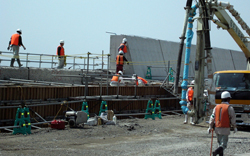
Work on raising seawallss
Efforts to Address Storm Surges
Measures to Address the Rise in Groundwater Levels Due to Storm Surges
The rising groundwater is related to the structure of the island itself. Kansai International Airport is surrounded by an environmentally friendly rock seawall built with rock material quarried from a mountain. For this reason, the structure is extremely water permeable. Consequently, when the surrounding sea level rises, the seawater flows into the airport island ground and the groundwater level rises. Likewise, when the sea level drops, the groundwater escapes and the groundwater levels also drop.
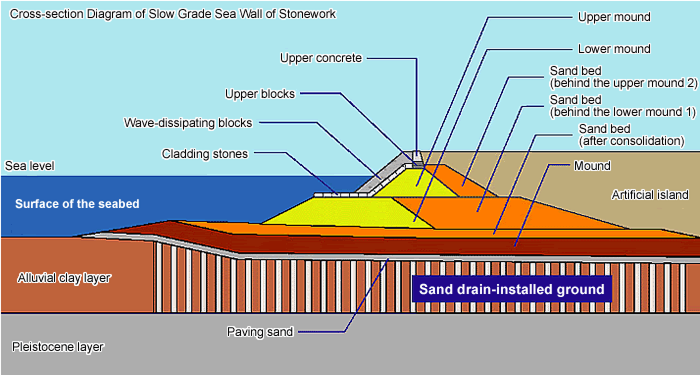
Airport island structure (Cross-section)
Water barriers (underground walls) were built as a radical solution to prevent seawater permeation into the airport island ground, and to curb rising groundwater. This involved excavating down to a depth of 30 m, where a non-permeable alluvial clay layer sits. Subsequently, a string of columns made from cement, soil and sand were constructed.
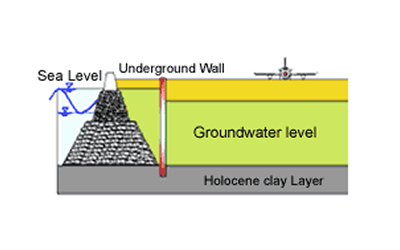
Diagram of a water barrier
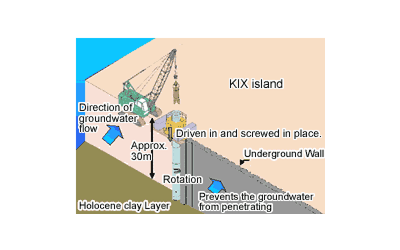
Groundwater levels prior to the construction of the water barriers
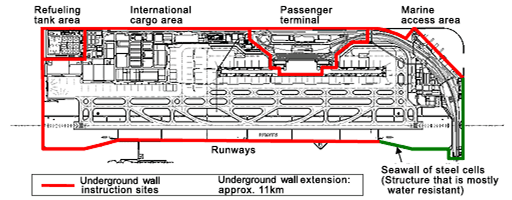
Water barrier locations
In 2006, a watertight wall for the entire Phase 1 island was completed, preventing groundwater from rising during abnormal tides and typhoon-induced storm surges. This measure will prevent any impact on airport functions in the event of sea level rise or subsidence due to global warming. Watertight walls are being installed sequentially on Phase 2 island as well.
